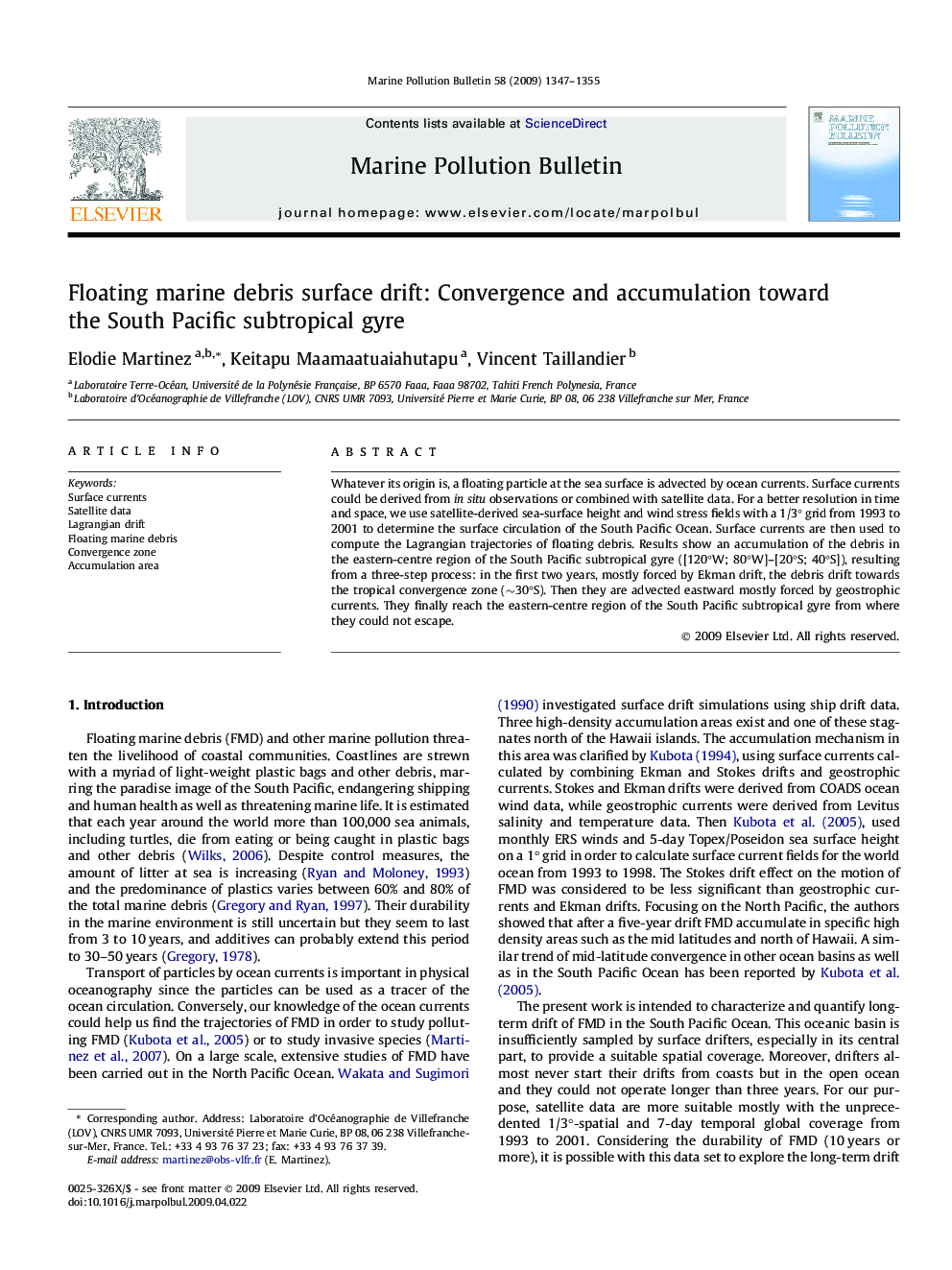| Article ID | Journal | Published Year | Pages | File Type |
|---|---|---|---|---|
| 6362861 | Marine Pollution Bulletin | 2009 | 9 Pages |
Abstract
Whatever its origin is, a floating particle at the sea surface is advected by ocean currents. Surface currents could be derived from in situ observations or combined with satellite data. For a better resolution in time and space, we use satellite-derived sea-surface height and wind stress fields with a 1/3° grid from 1993 to 2001 to determine the surface circulation of the South Pacific Ocean. Surface currents are then used to compute the Lagrangian trajectories of floating debris. Results show an accumulation of the debris in the eastern-centre region of the South Pacific subtropical gyre ([120°W; 80°W]-[20°S; 40°S]), resulting from a three-step process: in the first two years, mostly forced by Ekman drift, the debris drift towards the tropical convergence zone (â¼30°S). Then they are advected eastward mostly forced by geostrophic currents. They finally reach the eastern-centre region of the South Pacific subtropical gyre from where they could not escape.
Related Topics
Physical Sciences and Engineering
Earth and Planetary Sciences
Oceanography
Authors
Elodie Martinez, Keitapu Maamaatuaiahutapu, Vincent Taillandier,
